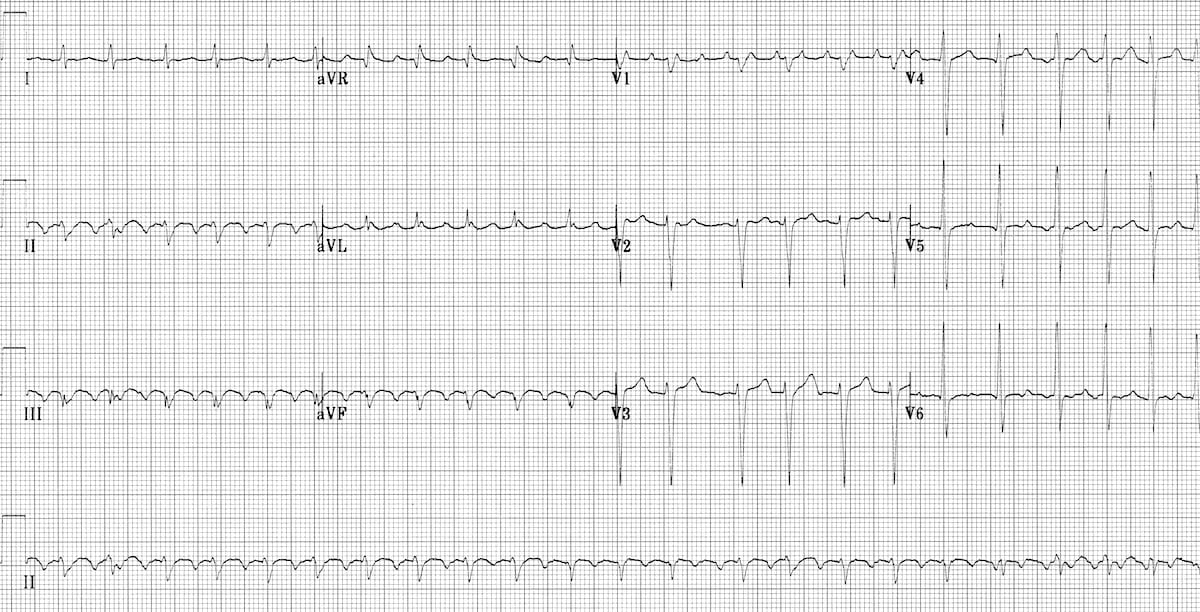

Finta uses radiofrequency energy to destroy abnormal electrical pathways in heart tissue. One technique growing in use by electrophysiologists is radiofrequency ablation (RFA).
#Atrial flutter symptoms sweating skin
In addition, atrial pacemakers can be implanted under the skin to regulate heart rhythm by providing a shock when needed. Surgery to disrupt electrical pathways is another option but carries the risks associated with major operations.

There also are drugs given in a medical setting through an intravenous tube that can sometimes restore normal rhythm. If these medications do not improve symptoms, electrical cardioversion-restoring normal heart rhythm with an electric shock-may be used. Using medications to slow down a rapid heart rate is often the first action taken.
#Atrial flutter symptoms sweating series
There is a series of steps taken when treating patients with AF, Finta notes. “This is done in almost all cases, even if the abnormal rhythms are infrequent.”
.jpg)
“Because of this risk, one of the first steps in treating these patients is to prescribe blood thinners to reduce the formation of clots,” said Finta. Stroke occurs in AF patients when blood clots form in one of the quivering atria, break off and are carried to the brain, where they block blood flow. About 15 to 20 percent of all strokes occur in people with AF, so the diagnosis, treatment and monitoring of these patients is important.” “People with AF have a five times greater risk of stroke. However, it can lead to other rhythm problems, chronic fatigue, congestive heart failure and worst of all-stroke. This condition in itself isn’t life-threatening and shouldn’t lead to cardiac arrest, says Finta, who also is a partner in the West Michigan Heart cardiology group. Seventy percent of the two million Americans who have AF are between 65 and 85 years old. About 2.3 percent of people over age 40 have it and that figure increases to 10 percent in people age 70 or older. These are symptoms not to be ignored and people should contact their physician immediately if they experience any of these problems.”ĪF is common in the elderly. “People experiencing AF can feel lightheaded, tired, have shortness of breath, even sweating and chest pain. He is an electrophysiologist-a cardiologist that specializes in treating abnormal rhythms of the heart.

“Most patients feel an uncomfortable flutter in their chest or an irregular pulse,” says Bohuslav Finta, MD, a cardiologist at Spectrum Health’s Fred and Lena Meijer Heart Center. Some experts explain it as the top part of your heart shaking like Jell-O and beating more rapidly than the lower chambers of the heart. Atrial fibrillation is the most common cardiac arrhythmia-abnormal heart rhythm-and as the number of cases grows, so do the options for treatment.Ītrial fibrillation (AF) is an abnormal, irregular and fast heart rate with electrical signals that are improperly generated in the upper chambers of the heart (atria). While most of the focus during heart month in February is on preventing or recognizing heart attacks, a heart rhythm abnormality is growing with our aging population and becoming a major risk for stroke. Cardiovascular Atrial Fibrillation: A Growing Heart Problem Patients More at Risk for Stroke Than Cardiac Arrest


 0 kommentar(er)
0 kommentar(er)
